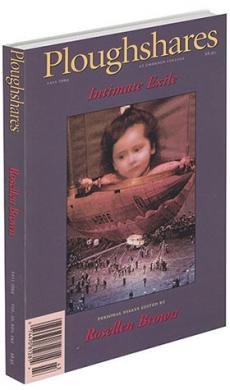rev. of Autobiography of a Face by Lucy Grealy
Autobiography of a Face
A memoir by Lucy Grealy. Houghton Mifflin, $19.95 cloth. Release date: Sept. 27, 1994. Reviewed by Don Lee.
At the age of nine, following a playground collision with another child, Lucy Grealy was plagued by a persistent pain in her jaw. After several misdiagnoses, it was determined that she had Ewing’s sarcoma-cancer. In
Autobiography of a Face, Grealy, who is now a poet, recounts the next eighteen years of her life, during which she endured nearly thirty operations, with poignant grace.
Initially, Grealy was innocent to the implications of her disease and its treatment, not realizing that victims of Ewing’s sarcoma are given only a five-percent chance for survival, not understanding that the operations and chemotherapy and radiation would leave her disfigured. Instead, she was almost insouciant, enjoying the attention at the hospital and wanting to show off her scars at school. But in due course, with half her jaw missing, she was teased mercilessly by her classmates. “The cruelty of children is immense,” Grealy writes, “almost startling in its precision.” Adult strangers, particularly men, began taunting her as well, and Grealy grew to feel ashamed about her looks.
Strangely, the hospital became a refuge for her, despite the pain of chemotherapy (“Pain, if nothing else, was honest and open — you knew exactly what you were dealing with”), whereas school continued to be intolerable and home was increasingly unstable: her father was not doing well professionally, and her mother, who was always disappointed when Grealy succumbed to tears, suffered from depression. The hospital was the only place she didn’t feel self-conscious, and there, she tried to come to terms with her disfigurement. She could not fathom why patients who were having cosmetic surgery didn’t appreciate how lucky they were to be merely healthy, normal, and she strove, with remarkable equanimity, to transcend petty desires for beauty.
Yet as each operation brought more disappointment, bone grafts deteriorating time and time again, Grealy surrendered on many occasions to self-pity and loathing. Respite came when she worked at a ranch during high school and when she wrote poetry at Sarah Lawrence and the University of Iowa, and she was eventually able to land a number of friends and lovers, but still, she could not avoid defining herself by the way she looked. Her face remained both a locus of despair and an excuse for being “unlovable,” as she often called herself: “This singularity of meaning — I
was my face, I
was ugliness — though sometimes unbearable, also offered a possible point of escape. It became the launching pad from which to lift off, the one immediately recognizable place to point to when asked what was wrong with my life. Everything led to it, everything receded from it — my face as personal vanishing point.” Of course, then, Grealy was utterly lost when considering a life with a successfully reconstructed face, a prospect she must reconcile at the end of the book.
Autobiography of a Face is a memoir of disquieting candor and power. Grealy gives her adult years somewhat shorter shrift than they deserve, but the account of her arduous coming of age is both haunting and inspirational, and she makes a lyrical statement about the complex relationship between beauty and self-worth in our society, about the ruthless “importance in this world of having a beautiful face.”

